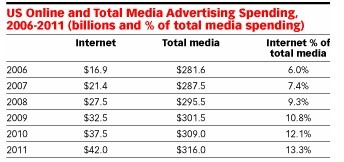This was November 2007 | « October 2007 | Main | December 2007 »
Presidential POVs on space explo
Posted on Thursday, November 29, 2007
When US presidential candidates get asked about their stance on space exploration, its always helpful to read what science fiction writers have to say about it. Agreed, space exploration is very different from the topic of space colonisation, but still its worth reading Charles Stross' take on the latter, even if only for the 1AU=1cm metaphor and the ensuing discussion in the comments.
Just found a good quote in one of his other articles:
Of course, aside from making it possible to write very interesting science fiction stories, the Singularity is a very controversial idea. For one thing, there's the whole question of whether a machine can think — although as the late, eminent professor Edsger Djikstra said, "the question of whether machines can think is no more interesting than the question of whether submarines can swim". A secondary pathway to the Singularity is the idea of augmented intelligence, as opposed to artificial intelligence: we may not need machines that think, if we can come up with tools that help us think faster and more efficiently. The world wide web seems to be one example. The memory prostheses I've been muttering about are another.
Google Earth and the Evolution of the User Interface to the Internet as platform
Posted on Wednesday, November 28, 2007
After wondering about GE's evolution myself yesterday, Techcrunch is now running a somewhat more blunt story of Google Earth heading towards extinction question mark:
Google has announced two new features for Google Maps that mimic features in Google Earth, begging the question: is Google Earth on borrowed time?The first new feature is the additional of terrain in Google Maps. The terrain fly over feature has long been available in Google Earth, but now you can fly over a map and see the contours of the land, all without the need to download Google Earth.
The second new feature mimics the community contribution feature of Google Earth. “Our Maps” brings wiki-style collaboration to Google Maps, with users able to annotate places and share those notes with friends or the greater public.
Google acquired Keyhole in October 2004 and it was immediately obvious as to why: Google wanted the satellite imagery to support their move into serious mapping. Keyhole provided Google Earth, a downloadable program that gave a then unprecedented view of the earth through the use of satellite imagery, but Google isn’t a software company, Picasa and a few small efforts aside. Google has integrated many of the functions from Keyhole into Google Maps whilst continuing to sustain Google Earth, but for how much longer? As Google Maps takes on more and more of the functionality of Google Earth the appeal of Earth must diminish. It also makes sense that Google would rather grow and sustain a web product over a software download. Google Earth will still be with us for some time to come, but how long is now up to Google, and I’m betting that Google is already looking at ending support sometime in the next year or two as Google Maps becomes everything Google Earth now is, but online and without the download.
Looks like Avi has the most sensible comment in there which deals with the topic at hand:
...As CPUs and browsers become more powerful, the features of the two applications will merge, as I’m sure was the plan all along.But since browser evolution has been so excruciatingly slow, I think it’s far more likely that we’ll see Google Earth become the defacto 3D web browser vs. Duncan’s prognostication.
ISU2
Posted on Tuesday, November 27, 2007
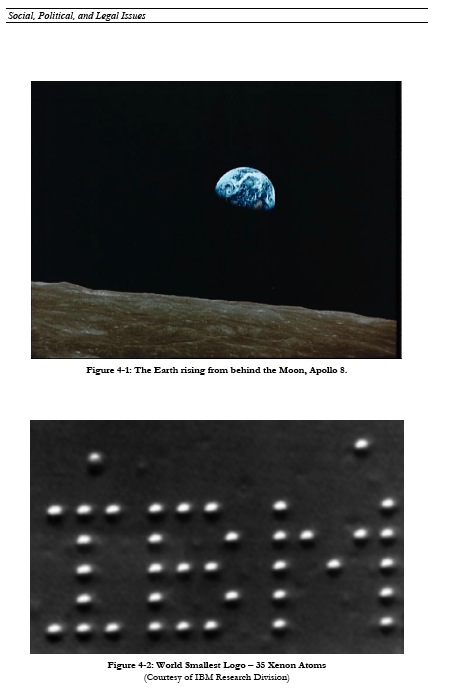
Erik Laan points me to this post about the ISU2 working meeting held at Ames Research Center yesterday and today:
The ISU-2 Working Meeting is being hosted by NASA Ames Research Center to bring together key individuals to brainstorm the concept of the International Singularity University (ISU2) and to answer certain fundamental questions and plan for a "Founders Conference" expected in Spring 2008 and an inaugural Summer Program in 2009 in the Bay Area.International Singularity University (ISU2) which would educate attendees on the history, current status, trends and projected futures of these technologies. ISU2 will facilitate students to form networks, study the implications of exponentially advancing technologies (nano, bio, AI, etc), the cross-disciplinary interactions, and legal, policy and societal implications which will result. ISU2 would be modeled on the concepts and practices pioneered by the International Space University (ISU) during its past 20 years of operation (1987 - 2007).
Date: 26-27 Nov 2007
Location: NASA Ames Research Center, Moffett Field, CA, US
Web Site Address: http://www.arc.nasa.gov
Way to go Ames! I am an alumni of ISU1, that is, the International Space University, where I participated in the '06 summer session Team Project dealing the impact of Micro & Nano Technologies for space so I am thrilled to see the ISU formula being applied to a topic that is close to my heart. In fact, I think I'd gladly follow the ISU-2 summer session cause it'll have a lot of interesting ground to cover. And Silicon Valley is the right place to be when it comes to the Singularity. ISU1 summer session 2009 is already scheduled to be hosted at Ames so '09 promises to become a truly remarkable summer over in Mountain View.
The Future of the Past
Posted on Tuesday, November 27, 2007
Nice space art for a change (thanks Jurryt!). Readers of this blog will have noticed I specifically use the term 'space related arts' for the activities I am involved with, like these, in order to make a distiction with the general understanding of what space art is, like this.
Google Earth in the browser window
Posted on Tuesday, November 27, 2007
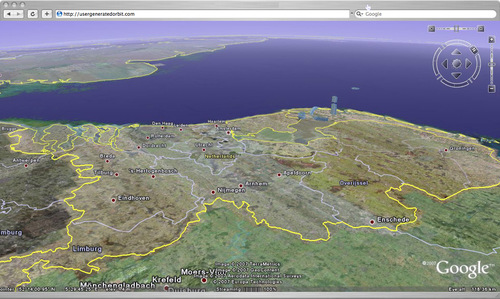
I wonder how long we'll have to wait until we have a native Google Earth in a webbrowser (there is a third party plugin, but its not quite there yet). I find myself hardly using Google Earth these days cause its just too much to load the app and switch away from my browser (which has more or less become my default desktop by now). When I need to look up a place on a map I type 'maps' in the URL field and Google Maps is there in an instance. Having been an avid Google Earth user earlier this year, an important shortcut I find myself trying in Google Maps is shift-pagedown/up, the ability to tilt my view from the vertical to get a sense of perspective by rotating around a fixed position on the Earth. You know its there, outside the borders of the Google Maps iframe, the whole dataset of Google Earth/Maps, but it just isn't obvious to navigate 3D space having only the 3 translational dimensions. This page is getting close to the Google Earth experience, but still there is a strong limitation without the rotations.
These are some interesting videos to look at related to above remark, where here the emphasis is on what would happen if you'd add the 3rd dimension to the flat 2-d space of the desktop: (1) BumpTop and (2) SUN's desktop
China to the Moon
Posted on Monday, November 26, 2007
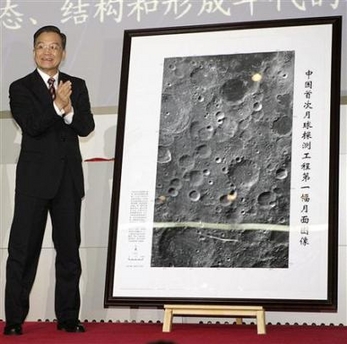
A nice combo: China and the Moon. More at Yahoo! and xinhuanet.
Google Space Agency
Posted on Monday, November 26, 2007
A quick backlog of links related to the Google NASA coop. They're working on it down at Ames in what is called the 'Planetary Content Team' (nice title):
The Planetary Content Team at NASA's Ames Research Center develops software that makes it easier for scientists and engineers to publish and access Earth and planetary imagery and data via the Internet. This includes both educational/outreach content aimed at the general public as well as technical data aimed at the scientific community. Headquartered in the Intelligent Systems Division at Ames, the team also includes partners in other areas of the agency and elsewhere.
They do both the NASA Google Moon work (Google maps only sofar but they're working on a Google
“NASA’s objective is for Google Moon to become a more accurate and useful lunar mapping platform that will be a foundation for future Web-based moon applications, much like the many applications that have been built on top of Google Maps,” said Chris C. Kemp, director of strategic business development at NASA Ames. “This will make it easier for scientists everywhere to make lunar data more available and accessible.”That's gonna come in handy when the robots are going to land on the Moon in the decades to come.
View Larger Map
Remap our intuition
Posted on Monday, November 26, 2007
A new video with Will Wright talking about Spore at TED earlier this year. Great stuff. Some interesting quotes and discussion @ 12:10 -> "remap our intuition" - "computer simulations can recalibrate your instinct across vast scales of both space and time" - "better calibration on long term thinking".
Digistuff
Posted on Monday, November 26, 2007
Alexander van Elsas points to a flickr set with some nice quotes. They're not all that great but enough are interesting to wade through. Here are a few of my favorites.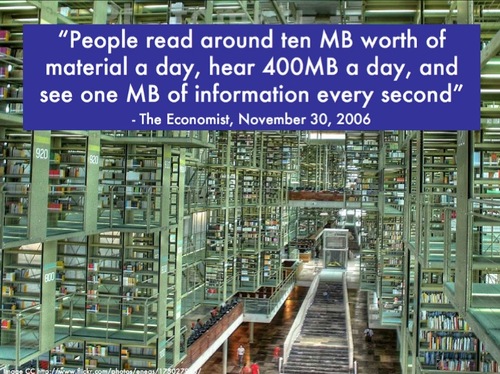
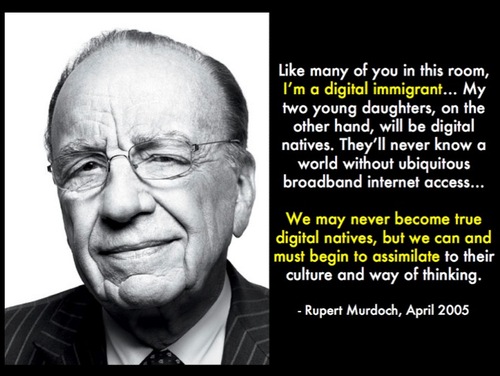
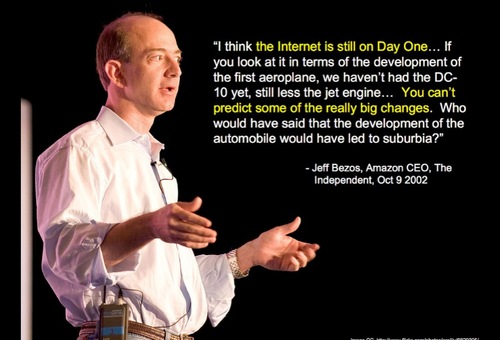
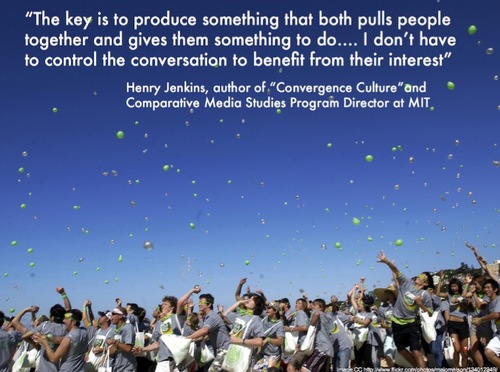
Thanksgiving 2008
Posted on Thursday, November 22, 2007
No thanksgiving on this side of the pond but a nice thursday evening in Amsterdam. A nice post by Nicolas Nova (one of my favorite blogs) on an article in the Economist on the fading fad of futurism:
Think small, think short—and listen
So there you are on the moon, reading The World in 2008 on disposable digital paper and waiting for the videophone to ring. But no rush, because you’re going to live for ever—and if you don’t, there’s a backed-up copy of your brain for downloading to your clone.
The most heeded futurists these days are not individuals, but prediction markets, where the informed guesswork of many is consolidated into hard probability. Will Osama bin Laden be caught in 2008? Only a 15% chance, said Newsfutures in mid-October 2007. Would Iran have nuclear weapons by January 1st 2008? Only a 6.6% chance, said Inkling Markets. Will George Bush pardon Lewis “Scooter” Libby? A better-than-40% chance, said Intrade. There may even be a prediction market somewhere taking bets on immortality. But beware: long- and short-sellers alike will find it hard to collect.Reminds me of a quote from CNBC back in 2000: '"time is money, so real-time is real money". Where is my online prediction market?
Rosetta looks at the Earth
Posted on Tuesday, November 20, 2007
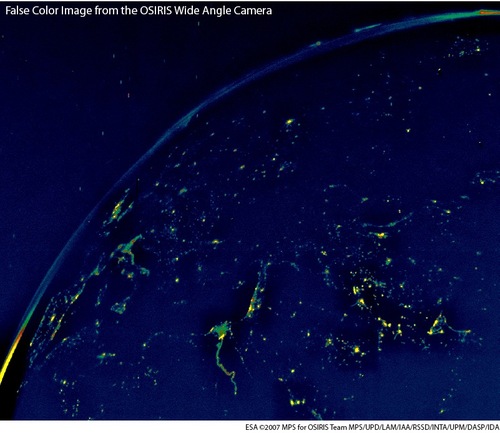
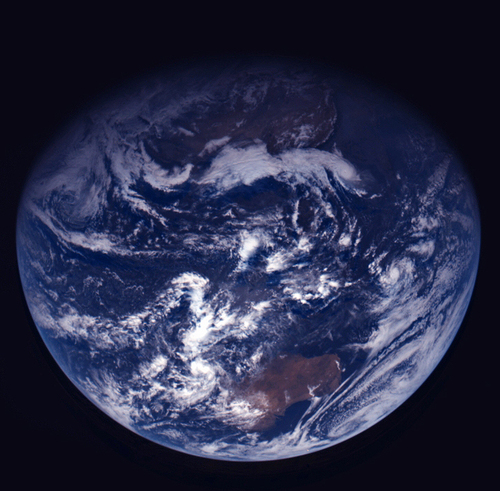
The first one is an oblique look at Europe with the Nile delta and Israel in the middle of the image. More about these images at ESA.
Space Explo's Value Propositions
Posted on Monday, November 19, 2007
The Register today writes under the title 'Americans clueless on NASA budgets' :
A recent survey, carried out on behalf of The Space Review, has revealed that the average American believes a quarter of the country's public purse goes towards funding NASA.Unfortunately, The Register gets its facts wrong because the survey was never conducted on behalf of The Space Review but merely written about on The Space Review, which happens to be one of the more interesting space blogs to read out there (together with NASA Watch and spacecynics). Going to the original article quoted above, I find 2 great articles on space exploration, relevance and customer value: Part 1 and Part 2. On the spot! It's a relief to read this as it provides a pretty clear cut picture of space exploration and its place in modern day consumer market thinking:
The survey found that most people reported the belief that NASA is almost as well funded as the military. The Department of Defense does receive roughly 21 per cent of the nation's wonga, but most people overestimated this by a further 12 per cent.In reality, NASA gets something like 0.6 per cent of the natonal budget, a fact which researchers report came as a surprise to those being surveyed. According to The Space Review, one participant replied "No wonder we haven’t gone anywhere!".
The survey formed part of a larger analysis of the costs and benefits of having a publically funded space agency. The writers argue that people have scant knowledge of what NASA actually does. Combined with the huge overestimates of the cost of running NASA, it is not surprising that people often regard it as being poor value for money.
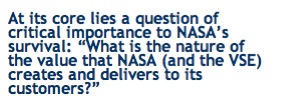 .
.
HDTV from the Moon
Posted on Wednesday, November 14, 2007
The only thing missing now is a live internet connection to this camera. Anybody has a 30m dish available? More on the video material at JAXA, the Japanese space agency who's satellite SELENE is currently flying the HDTV camera in low lunar orbit.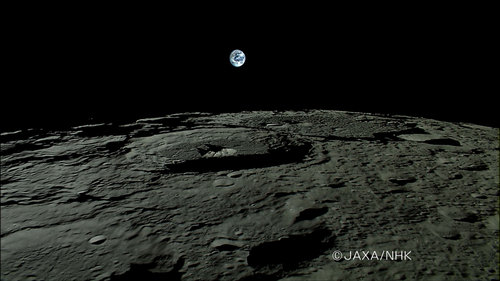
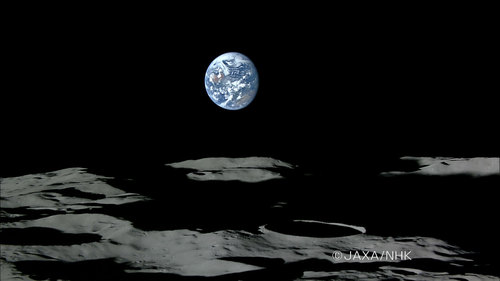
Some thoughts following the Space Explo Conference
Posted on Tuesday, November 13, 2007
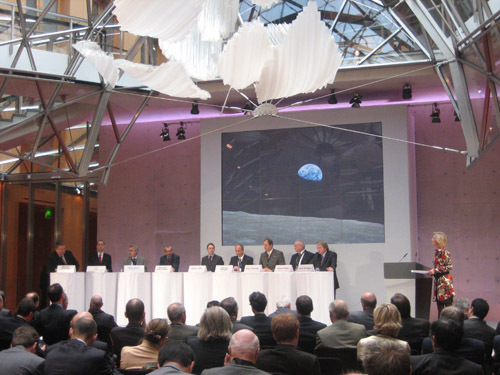
Update 15 November: I was told at ESTEC today that videos of the conference will indeed be posted lateron once they are finished with the editing.
I went down to Berlin last week to attend an ESA/DLR conference on the future of Space Explo in Europe. A lot was said, presentations were abundant, and the various stakeholders (in particular politicians, space agencies and industry) gave their view on what Europe should be doing in the years to come on space explo. One of the main outcomes of the conference: the European Space Exploration Strategy has been reworded to the European Space Exploration Programme...he, these things can make a world of difference.
Interestingly enough, the M word, as in Moon, is still hard to pronounce by Mr. Sacotte of ESA as the agency has decided it should focus on the Mars. Seems this is a position they took when NASA was fully engaged with Mars exploration back in the early 00's. However, since then, Bush has redirected the NASA strategy towards bringing humans back to the Moon, and it seems hard for ESA to bring its strategy in line with this redirected global explo agenda. So while all countries pulling any weight in the space explo arena, China, India, the US of A, all have their focus on the Moon, Europe seems to be struggling with their lock-in in thinking about the Mars (the English pronounceation of native German speakers brings some funny mashups, as in talking about the Moon vs talking about the Mars). Germany however isn't fooled and recently announced its plans to develop a national lunar probe, something that was re-iterated at the conference by DLR Director of Space Programmes Mr. Dollinger.
There was a point where I got intruiged about the way they talked about the usual dichotomy between robotic (unmanned) and human exploration. Usually, this debate quickly ends in the trenches where the proponent on either side digs him/herself in with the usual arguments, leading nowhere. A first smart remark in this context I remember from US astronaut Jeffry Hoffman (of Hubble repair fame) who made the comment at ISU about the complementariness of humans and robots (I don't remember his complete argument, but given that he went up to space to repair a robotic explorer kind of paints the picture of his understanding). At this conference, there was the same question on the table. On itself an interesting question and space is one of the few places where this comes up all the time due to the shear costs involved in sending humans up. This time, it felt as if the conference participants, all human to my knowledge, where there to make a strong case for human exploration...because all of us attending were human. It seemed there was a stance in the robotic/human debate about us against them. Its the first time I interpreteted the debate this way, but it makes for an interesting perspective on where things might be going. The drive to explore doesn't change, its the means that are under scrutiny. Another argument in this context, one that I made together with an ISU collegue last year at a presentation was the following: the most efficient space suit is one without a human inside.
Another important topic which seemed to come up every 5 minutes during the conference was the need for communication of why Europe needs to take part in this global exploration agenda. Well, I guess its true then. The 'Artist as Space Explorer' space & the arts exhibition was nice in that respect but I had a strong deja vu of some 7 years ago when I was involved in a similar type of set up for ESA and the exhibition was mainly used as decoration around the bar with free champagne. Not that different here. Still, it appears there is a little seed taking root at ESA. Hope they'll let it grow...
If this were the web2.0 Summit held in San Francisco last month, the presentation videos would have been online by now. But this is a meeting of much less importance so no videos yet (space exploration...wasn't that something with Apollo?). I really hope they put some videos of the conference online, but given ESA's track record of keeping the walls high and dry, I have my doubts. I'll certainly address it when I get to ESTEC this week. Also in terms of putting the presentations online. If you're interested to put some faces to names, have a look at the flickr photoset I uploaded with the main talking heads. Below pictures were from a presentation by astrophysicist Hans-Joachim Blome about the Cultural Dimension of Human Spaceflight and Exploration. He managed to stay out of the usual paths and gave a glimpse at exploration from a scientific evolutionary point of view. I hope to receive his presentation later this week so I can post it here. 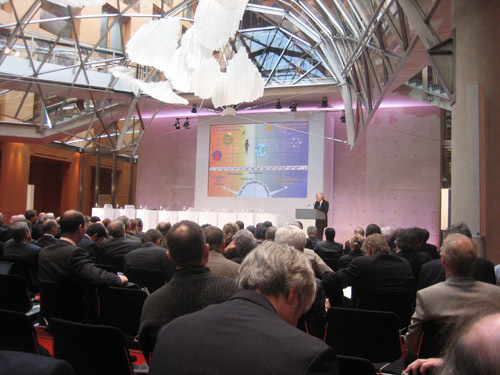
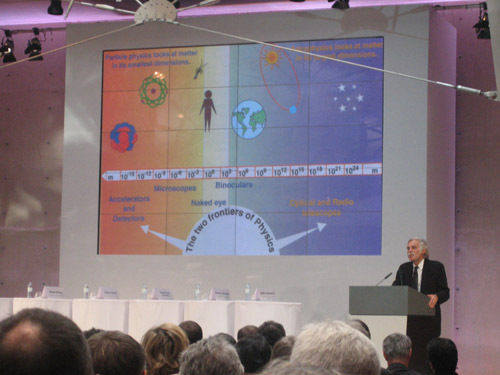
YES2 sets the world record straight
Posted on Friday, November 9, 2007
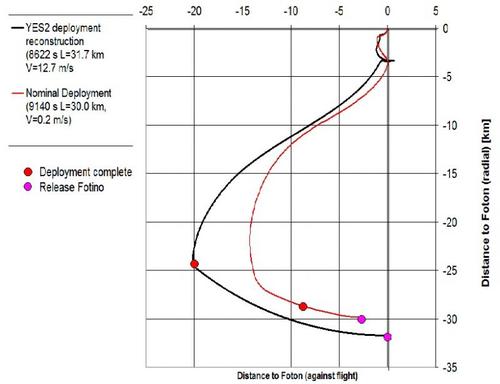
After 6 weeks of analysing the data, its official: YES2 deployed the longest structure in space ever. More at the YES2 blog...a lot more.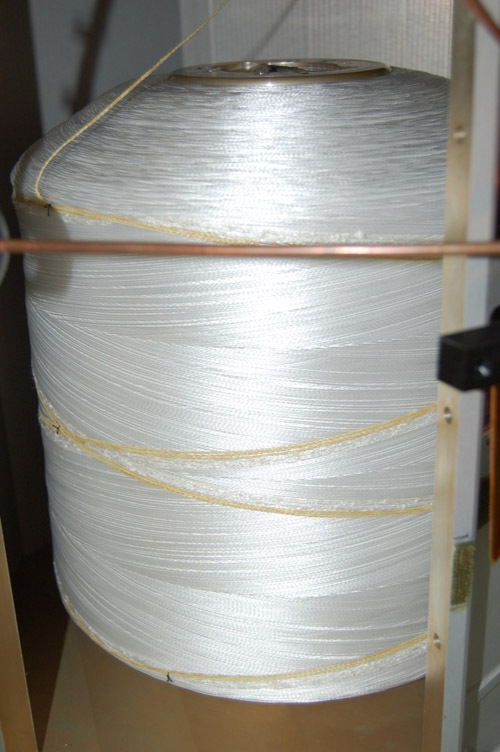
Facebook takes the dive
Posted on Friday, November 9, 2007
Yikes, this is getting pretty weird: Facebook Is Marketing Your Brand Preferences (With Your Permission). More at Battelle. And the best analysis yet, over at Rough Type: "The medium is the message from our sponsor". He also has some more on McLuhan.
Targeted advertising...or machine learning...?
Posted on Tuesday, November 6, 2007
Which of the two was it again? Who's teaching who? This insightful article Can Facebook feed its ad brains? on the imminent Facebook ad platform (and related industry) gives some clues. It still amazes me that this is the business model on which most of today's web2.0-ish Internet ventures thrive. Highly relevant advertising. Actually, when I think of it, the 'what other users liked who bought this book' feature over at Amazon is quite ok. Not that I immediately go out and buy all those books, but it provides a bit of context, and in that sense its not all that unuseful. These emerging data patterns still strike me as the Internet's equivalent to thoughts emerging, although I also immediately hear myself saying: "don't metaphor me in".
I had a very brief chat on Skype late last night with a friend over in Australia who was just about to go to work in the morning and who had this to say about it:
the 'machine' is the mechanism: the mechanism is the people. The 'machine taking over' is ultimatley a submission unto the hive of the people - it is a social demise as well as the literal manifestation of technology - and an avoidance of the self, the self will and self power of thought
Its Getting Pretty Big Out There..and Beautiful...
Posted on Tuesday, November 6, 2007
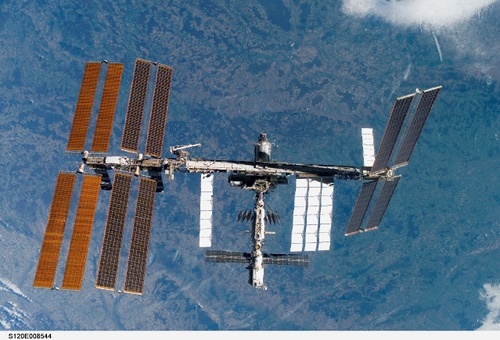
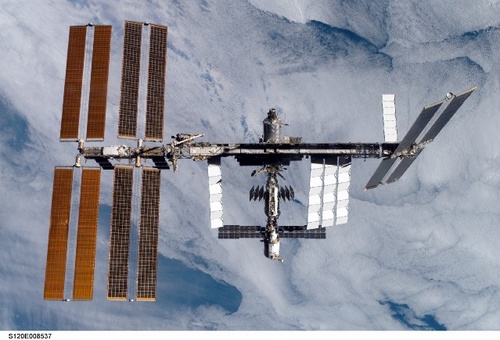
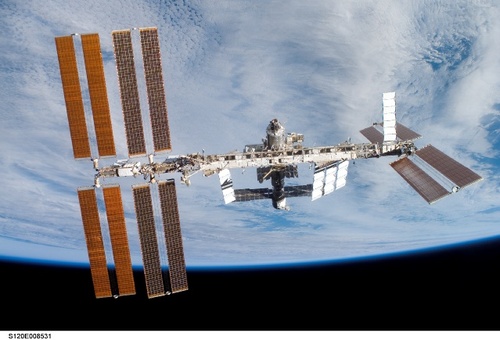
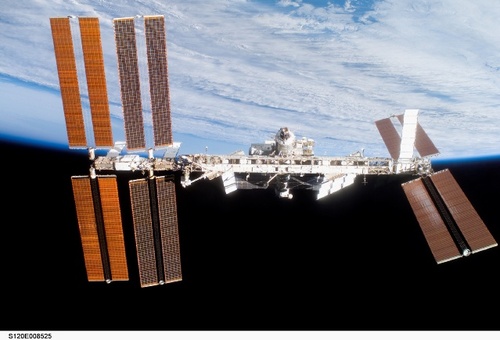
(via NASA Watch)
DinnerTV: Its getting there, the Social API
Posted on Saturday, November 3, 2007
Aka OpenSocial. Below video gives a good intro.
The future is process, not a destination
Bruce Sterling
Everything is ultimately becoming information technology
Ray Kurzweil
Data is the Intel inside
Tim O'Reilly
There is only one machine and the web is its OS
Kevin Kelly
The medium is the message
Marshall McLuhan

